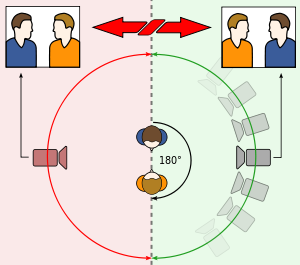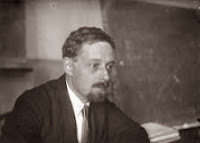What is the Thriller Genre?
The thriller genre is the type of films that use intense excitement, suspense, high level of anticipation, anxiety and tension. Thriller and suspense films are literally the same types of films with the same features and categorizations as each other.
The aim of a thriller film is to leave the audience constantly on the edge of their seat in suspense and anxiety with cliff hanging experiences as the plot builds up to a climax. Tension usually arises when the main character is dealing with a mysterious situation from which either he could be in trouble or escaping on some dangerous mission that seems impossible or shocking. When their life itself is threatened and they are in the unknown or not expecting something when in or potentially involved a dangerous situation or atmosphere. Thrillers usually involve characters that come into conflict with each other or with outside force.
Thrillers are often sub-genres of the genre ‘thriller’ as there are so many varieties that also fit into other genres. For example:
action-thrillers (Kill Bill - 2003)
sci-fi-thrillers (Donnie Darko - 2001)
psycho-thrillers (se7en - 1995)
romantic-thrillers (Live Flesh - 1997)
political-thrillers (Malcolm X - 1992)
psychological-thrillers (Requiem for a Dream - 2000)
Horrors are commonly closely related to thrillers. As the horror genre are designed in the same type of way - to provide the audience with intense suspension or tension, however horrors take their audiences through agony and fear. Suspense-thrillers come in many different ways: there are murder mysteries, chase thrillers, women-in-danger films, courtroom and atmospheric, plot-twisting psychodramas. Thrillers tend to stay away from crime, gangster and detective related plots and rather focus more on the suspense and thrill of the film.
Thrillers include such characters as convicts, criminals, stalkers, assassin, innocent victims, characters with dark pasts, psychotic individuals, terrorists, cops and more. The themes of thrillers frequently include conflict, terrorism, conspiracy, pursuit, or romantic triangles leading to murder or danger.
The reason there are so many different sub-genres of thriller is because within one thriller there may be other aspects of say a romance, horror, sci-fi or any others. This may be because of different directors intentions or their target audiences; furthermore even down to the evolution of genre or thrillers to be exact in which films are now being changed to set to the current time in which they are made or evolving to the new likes and dislikes of the mass.
Evolution:
The first thriller was made in the 1920’s with a film called ‘The Lodger’ by Alfred Hitchcock which was made in Britain. This therefore brought a new type of film to the world. HItchcock took influences from German expressionist techniques as well as murders by “Jack the Ripper”.
Thrillers then in the 1940’s changed when director George Cukor in 1944 created a psychological thriller called ‘Gaslight’ which gave insight into the different sub-genres within the thriller genre itself. This film was about a scheming husband planning on making her wife go insane to gain the inheritance. Then in 1946 Robert Siodmak directed the film ‘The Spiral Staircase’, which was also a psychological thriller about a serial killer murdering disabled-young women in the local community.
In the 1950’s Hitchcock went on to adding Technicolour to his films, which led to the classic film ‘Strangers on a Train’ in 1951, where two passengers join in a battle of wits and exchanged murders with one another.
Cape Fear was then made in 1962 by director J.Lee Thompson which is a psychological thriller about an ex con seeking revenge on his attorney who holds responsible for his convictions. However this film had aspects of crime too which made it a crime-thriller and therefore emphasised the use in sub-genres within the thriller genre.
The 1970’s of film were very different as Hitchcock hadn’t released anything for 2 decades. where he released the violent film ‘Frenzy’ which came about when films were now containing R rated scenes with viscous and explicit footage which Hitchcock therefore used in ‘Frenzy’.
In the 1980’s Stanley Kubrick directed the film The Shining made in 1980 which was a psychological thriller as well as a horror, mystery and drama. This therefore emphasises the mix of genres and how thrillers evolved over time due to the change of other genres and audiences enjoying psychological films. The Shining is about a family going to an isolated hotel where the father gets influenced by a spiritual presence, while his psychic son sees horrific and violent memories of the past and future. This film can be debatebly a horror or a thriller.
The main theme throughout the thriller genre in the 1990’s was the psychological kind, of mental themes and character’s escape. For example Rob Reiner’s ‘Misery’ based on the book by Stephen King in which the character Annie whom is a unbalanced fan, terrorizes an immobile author, where in one scene she actually breaks his ankles. This shows just how much the thriller genre had evolved by then as before it would be too horrific for a thriller to even show such scenes let alone any movie.
In modern day thrillers compared to earlier thrillers tend to divert from the traditions of a classic thriller towards the more horrific and gorey themes. This is because the mass audience have become so desensitized to the classic thriller scenes that they find it boring and therefore need something else to keep them intrigued and ‘on the edge of their seats’ with anticipation like thrillers should do. This is why thrillers and any other genres evolve as they need new aspects and ways of keeping their audience’s happy. Therefore this is why the thriller genre has evolved the way it has and how I have said turning from the classic thriller through psychological to a more horrific theme where it seems to be argued to cross over in cases.
Evaluation
From my group members work it has developed my understanding of the thriller genre and what it is made up of through its codes and conventions such as: clips that use intense excitement, suspense, high level of anticipation, anxiety and tension. Characters as convicts, criminals, stalkers, assassin, innocent victims, characters with dark pasts, psychotic individuals, terrorists, cops. Alfred hitchcock also played a big part in creating the thriller genre as he created the first Thriller in 1920's with 'The lodger'. My group members research has also helped me see the constant change throughout the years and how thriller genre has evolved over many of years.
























